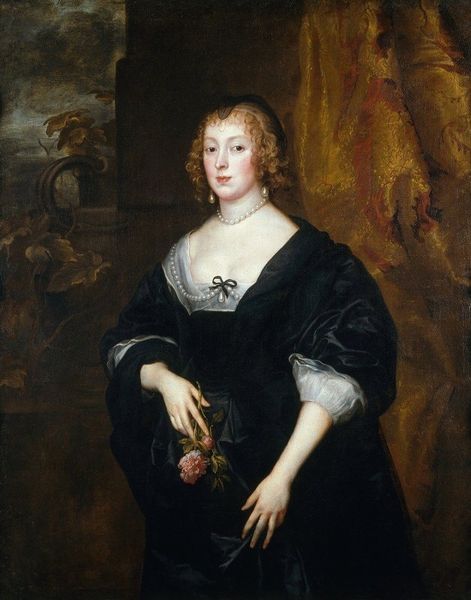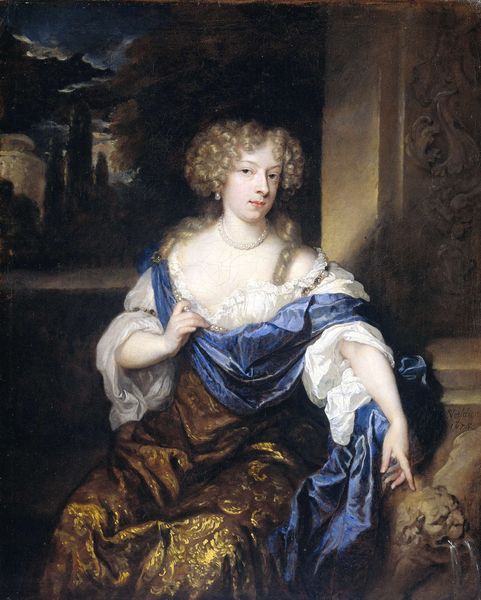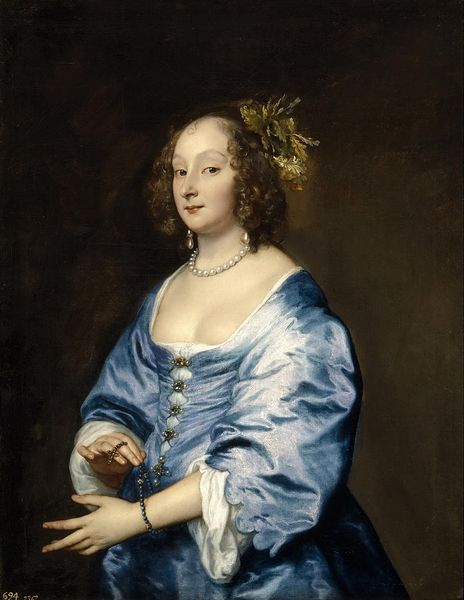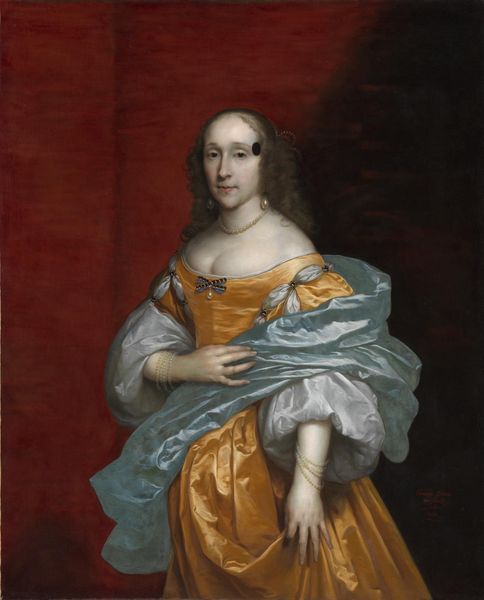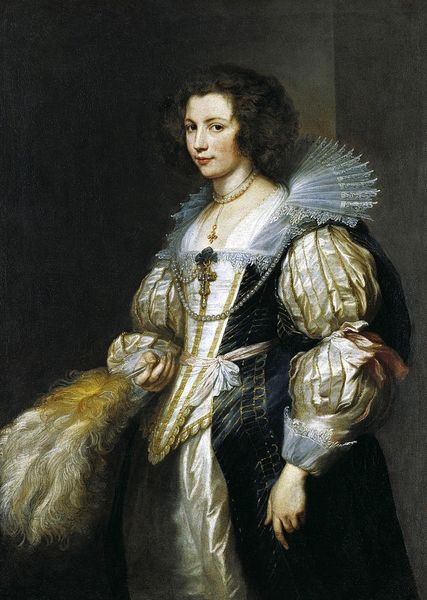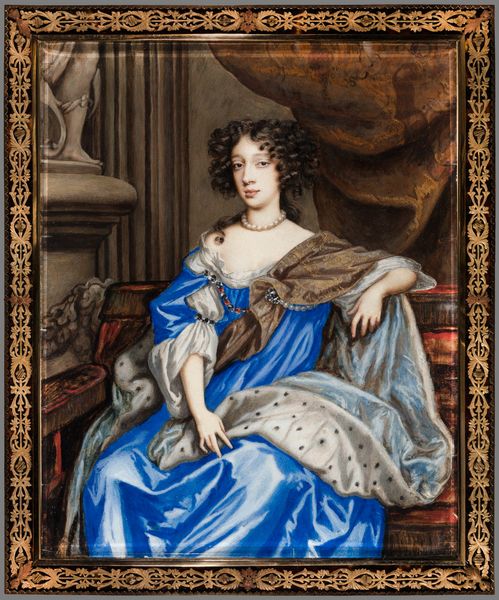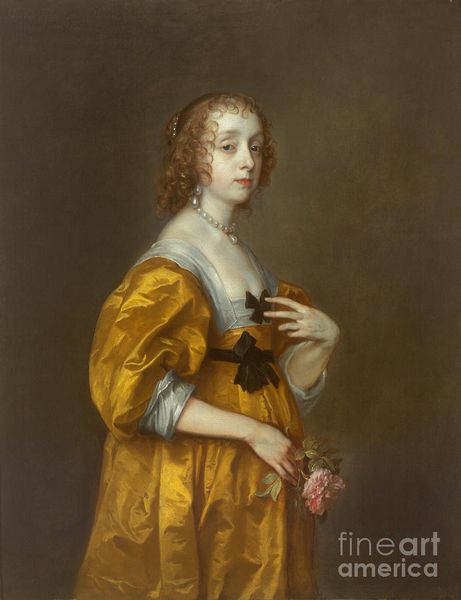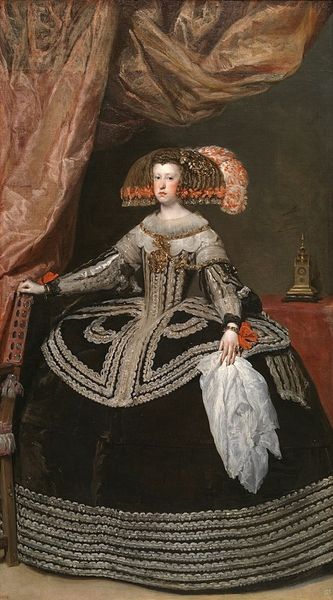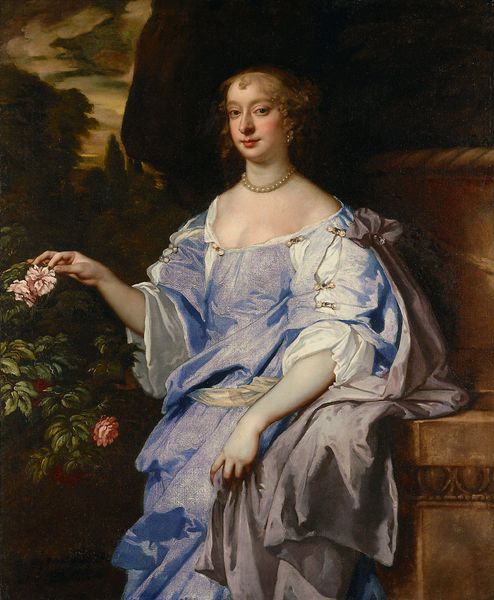
painting, oil-paint
#
portrait
#
baroque
#
painting
#
oil-paint
#
portrait head and shoulder
#
portrait drawing
#
history-painting
#
portrait art
#
fine art portrait
#
celebrity portrait
Copyright: Public domain
Curator: Here we have Anthony van Dyck's portrait of "Queen Henrietta Maria of England." The way she gazes, slightly off to the side...it's like catching her in a private thought. Editor: That satin! Just look at the yards of that iridescent blue fabric pooled around her. It screams labor—the intense work needed to produce it, from silkworms to the seamstress, a symphony of material effort! Curator: The folds are indeed lavish! Notice how van Dyck contrasts the cool, flowing satin with the warmer tones of her skin and the single flower she holds. It suggests a fragility, perhaps hinting at the turbulent times she lived through. The positioning of the crown—discarded almost, beside her on a table—adds a touch of casual regality, wouldn’t you say? Editor: "Casual" for the aristocracy, maybe! I am much more interested in this portrait’s ability to present royal power through such extensive, imported materials, and what that would represent to the common person at the time. Imagine what she wore was worth compared to what workers were paid? Curator: Fair point, the material richness definitely reflects royal privilege. But also, consider her expression. She looks out, she may have power, she also looks trapped and tired, almost ethereal against such rich color. The baroque splendor is contrasted against a quiet humanity. It almost humanizes her more. Editor: I still go back to the economics of that dress. It speaks to the heart of baroque sensibilities. Exquisite production meant expensive acquisition and clear lines between classes based on access to commodities and not any type of humanity or feeling. Curator: A sobering perspective, absolutely. Editor: It is all about who made that gorgeous, ridiculous garment—the makers rather than the wearer. Curator: So true. Both are part of the art experience in different ways. I suppose that is why this painting remains captivating centuries later, inviting us to consider not only the sitter but the world of craftsmanship, history, and perhaps loss around them too. Editor: Exactly—art can do so much more by focusing on how and why it was constructed, and less on appearances.
Comments
No comments
Be the first to comment and join the conversation on the ultimate creative platform.
